
MOGADISHU, SOMALIA, 1 AUGUST 2017: A local fisherman delivers a shark to the fish market in Mogadishu. Fishing remains a vital resource for Somalia, complicated by overfishing by illegal foreign fleets and difficult to police without a navy. Notorious Somali piracy originated with this overfishing as locals fisherman caught less and less. New development in Mogadishu and elsewhere has seen a rise in demand for fish and with potential EU aid, the Somali fishing industry could become a real economic force. (Photo by Brent Stirton/Verbatim for Time Magazine.)
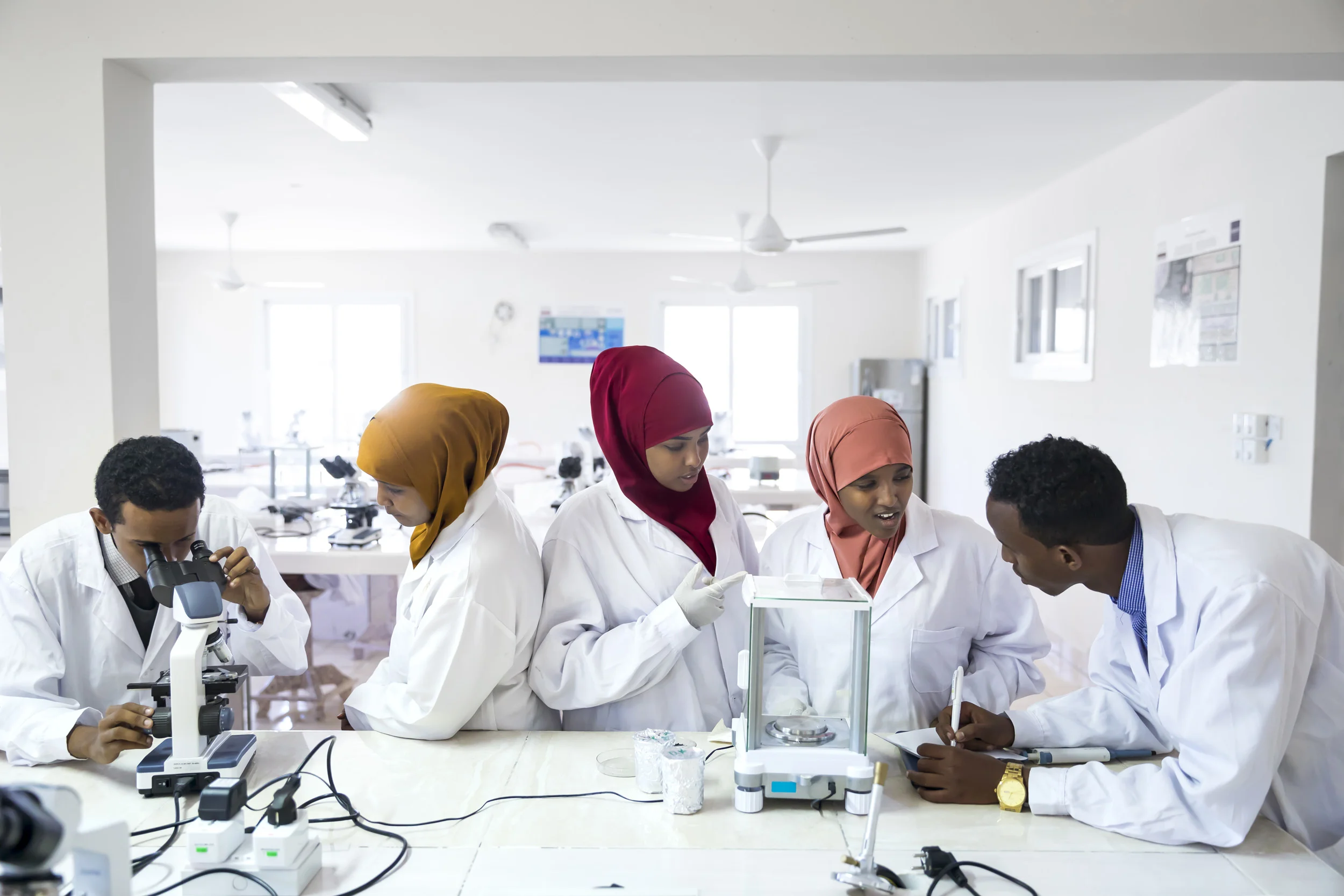
MOGADISHU, SOMALIA, 1 AUGUST 2017: Students at Simad University in Mogadishu learn lab skills in the modern laboratory in Mogadishu. The university has two labs, this one specializes in the study of hematology, micro-biology, bio-chemistry and molecular biology. Students are involved in research on antibiotics as well as the testing of traditional medicine in Somalia. (Photo by Brent Stirton/Verbatim for Time Magazine.)
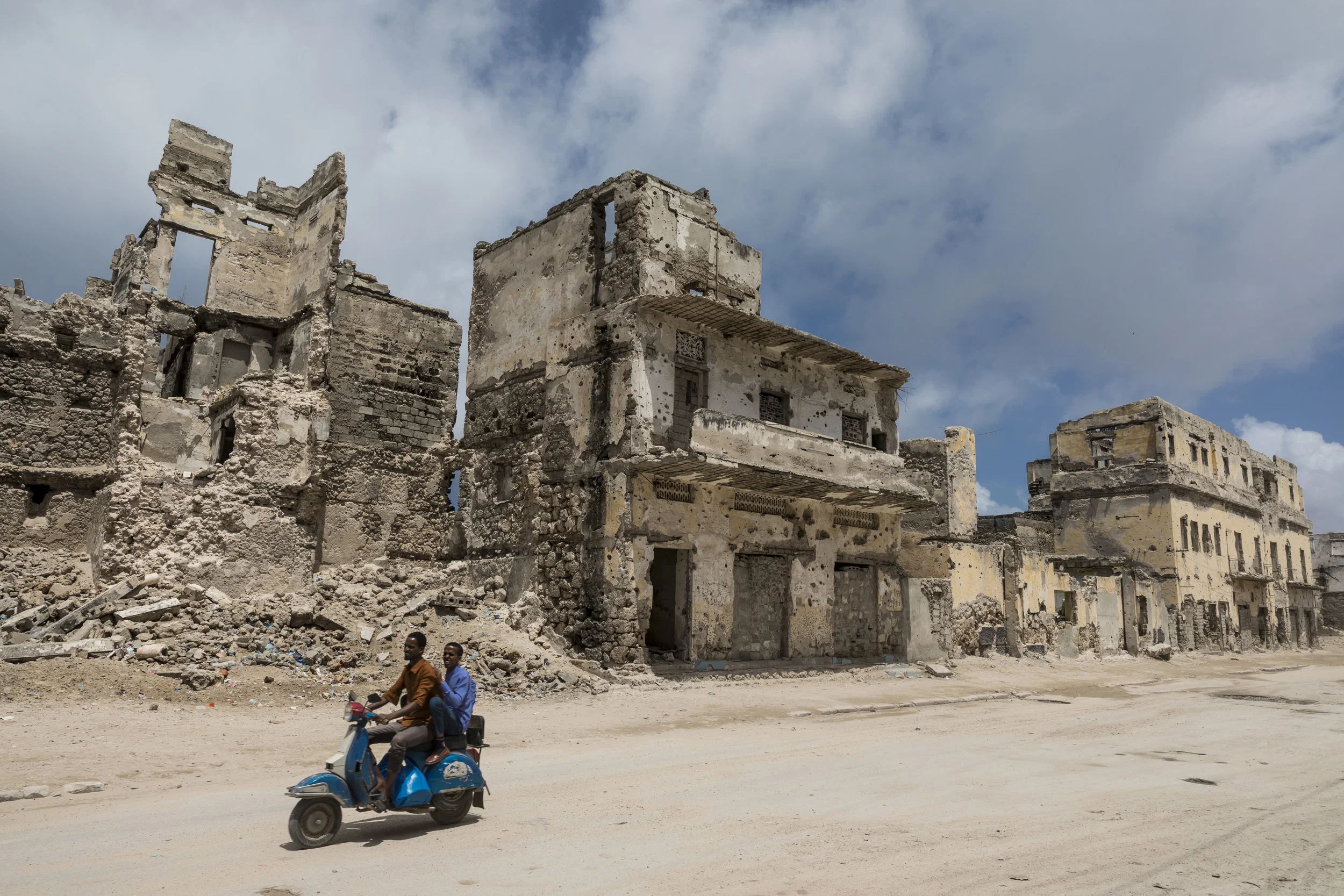
MOGADISHU, SOMALIA, 2 AUGUST 2017: Scenes along the Mogadishu foreshore, destroyed by civil war beginning in the nineteen eighties. These buildings and many others along the foreshore are shrapnel-pitted ruins but they occupy some of the most desireable land in Somalia if stability comes to the country. This area was a beach paradise before the civil war with a heavy Italian presence. If Al Shabab can be defeated, many Somalis feel that will be the last hurdle to stability and a new and resurgent economy. (Photo by Brent Stirton/Verbatim for Time Magazine.)

MOGADISHU, SOMALIA, 2 AUGUST 2017: A young girl watches American cartoons in a room inside the ruins of the former US embassy in Mogadishu from the nineteen eighties. This building and many other along the foreshore are shrapnel-pitted ruins but they occupy some of the most desireable land in Somalia if stability comes to the country. This area was a beach paradise before the civil war with a heavy Italian presence. If Al Shabab can be defeated, many Somalis feel that will be the last hurdle to stability and a new and resurgent economy. (Photo by Brent Stirton/Verbatim for Time Magazine.)

MOGADISHU, SOMALIA, 2 AUGUST 2017: Local builders work on a new house on the foreshore of Mogadishu. Surrounded by buildings ruined by the civil war, new money from the Somali diaspora is now investing in this area, a former beach paradise before the civil war with a heavy Italian presence. If Al Shabab can be defeated, many Somalis feel that will be the last hurdle to stability and a new and resurgent economy. (Photo by Brent Stirton/Verbatim for Time Magazine.)

MOGADISHU, SOMALIA, 1 AUGUST 2017: Street scenes in Mogadishu close to the sea. (Photo by Brent Stirton/Verbatim for Time Magazine.)

MOGADISHU, SOMALIA, 5 AUGUST 2017: Yahya Jimale Kheyliye, 8, was one of nine children who were hit by an Al-Shabab mortar that was fired at the presidential compound on the day the new president was elected. Two children died and 7 were wounded, most of them were from the Kheyliye family who's home is on the border road close to the president's residence. The new president helped immediately but even when Yahya was sent to Turkey for surgery, the family was told the brain surgery required was too delicate and there was nothing that could be done. Yahya has gone from being a normal happy child to being one with limited motor skills, limited mental capacity and he has lost his ability to speak. This is due to the two pieces of mortar shrapnel that are lodged inside his brain. A Somali who lives in the USA has brought a number of wounded children to the USA for complex surgery, he is working on being able to do the same for Yahya but President Trump's travel ban on Somali's is complicating matters. (Photo by Brent Stirton/Verbatim for Time Magazine.)

MOGADISHU, SOMALIA, 3 AUGUST 2017: The president of Somalia, Mohamed Abdullahi Mohamed Farmagio, the 9th elected president of this complicated country. President Farmagio is an American citizen and part of the Somali diaspora displaced around the world by civil war inside Somalia. He spent much of his time in the US in Buffalo NY advocating for the rights of minorities. Inside his office at Villa Somalia, he has a large portrait of Aden Abdulle Osman positioned directly in his line of sight. Osman was the first president of an independent Somalia, elected in 1960. President Farmagio says he likes to be able to look up and see that portrait because when Osman lost the campaign for re-election by one vote, he willing stepped down in one of the first true acts of African political democracy. Current President Farmagio sees this as an inspiration for leadership in Somalia, a country he hopes to lead to stability and increased prosperity. (Photo by Brent Stirton/Verbatim for Time Magazine.)

MOGADISHU, SOMALIA, 1 AUGUST 2017: A security guard chews Khat to stay awake in in the stairwell of the Sahafi hotel in Mogadishu. All hotels have a heavy security presence in the face of Al Shabab attacks in the city. Somali and African Union forces have pushed the main Shabab forces outside of the city but suicide bombers and attacks on western targets are still relatively common in the city. (Photo by Brent Stirton/Verbatim for Time Magazine.)
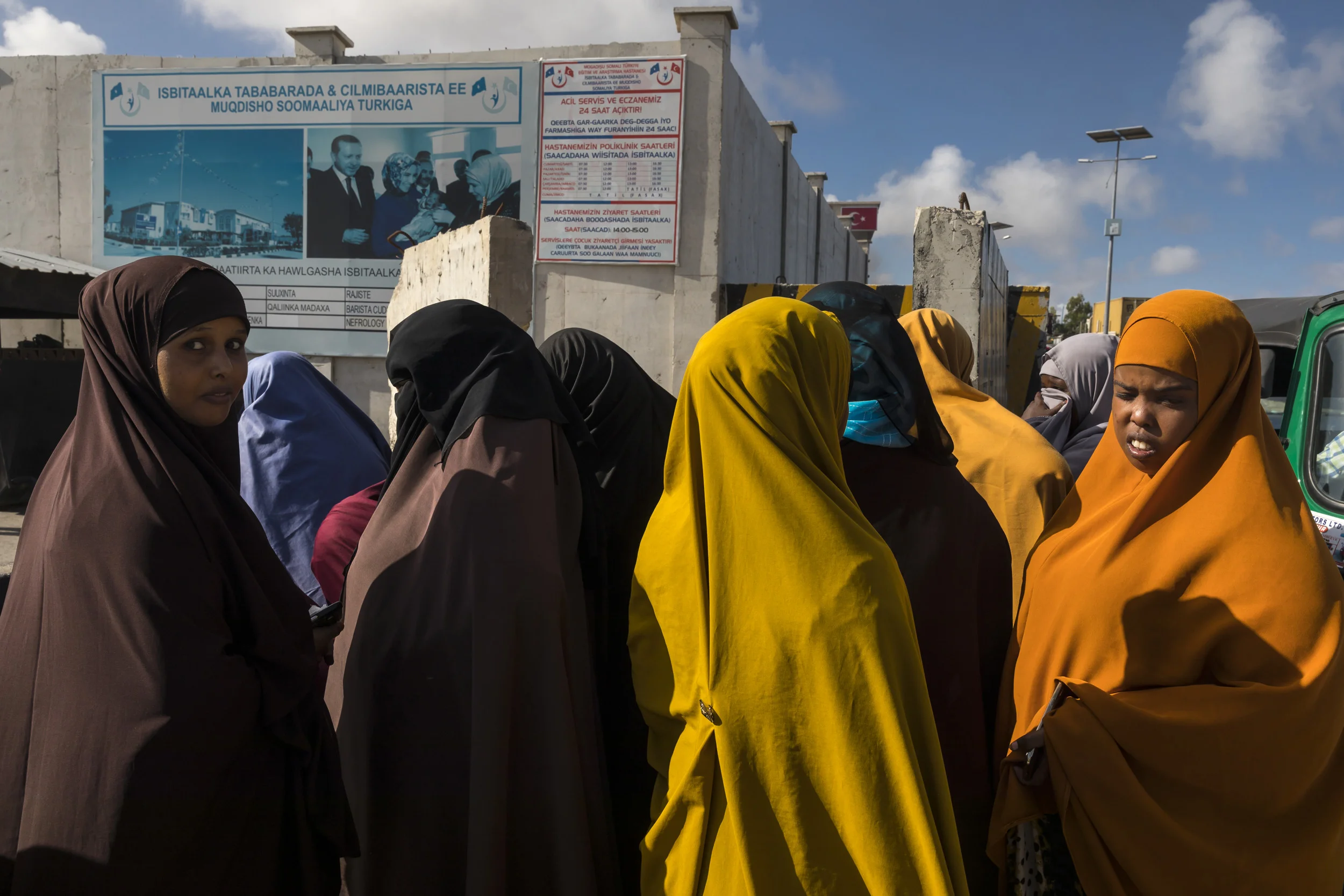
MOGADISHU, SOMALIA, 1 AUGUST 2017: Somali woman queue to pass through security at a new Turkish built hospital in Mogadishu. This new facility is one of many initiatives the Turks have undertaken in the city, the new airport is another example of investment in uplifting the Somali economy. This new hospital is the only facility in Somalia to offer incubators for premature or problematic newborns and the hospital also boasts the only dialysis unit in the country. (Photo by Brent Stirton/Verbatim for Time Magazine.)

MOGADISHU, SOMALIA, 3 AUGUST 2017: Nurses attend premature babies inside the new neo-natal unit at the Turkish built and run hospital in Mogadishu. The child in this image weighed only 600 grams at birth and would surely have died without this special unit. The hospital has 16 incubators for premature babies, the only facility of its kind in Somalia. There has been increasing relations between the Turks and the Somalis, with the Turks building not only this hospital but also the new airport and many other projects in Mogadishu. President Erdogan himself has visited and opened the new hospital. The Turkish embassy in Mogadishu is huge and reaffirms their long-term commitment to investing in Somalia. (Photo by Brent Stirton/Verbatim for Time Magazine.)
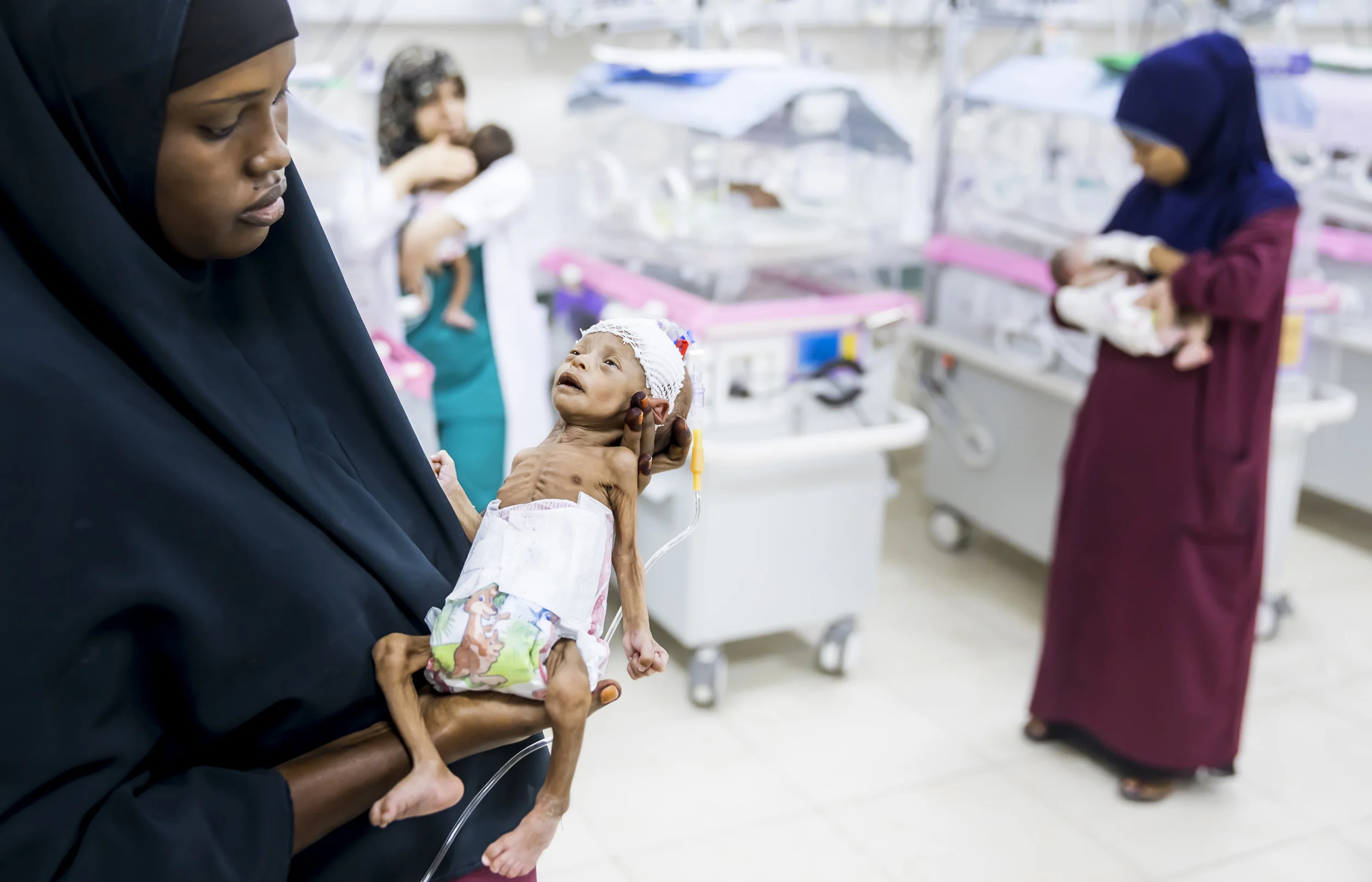
MOGADISHU, SOMALIA, 3 AUGUST 2017: Nurses attend premature babies inside the new neo-natal unit at the Turkish built and run hospital in Mogadishu. The child in this image weighed only 600 grams at birth and would surely have died without this special unit. The hospital has 16 incubators for premature babies, the only facility of its kind in Somalia. There has been increasing relations between the Turks and the Somalis, with the Turks building not only this hospital but also the new airport and many other projects in Mogadishu. President Erdogan himself has visited and opened the new hospital. The Turkish embassy in Mogadishu is huge and reaffirms their long-term commitment to investing in Somalia. (Photo by Brent Stirton/Verbatim for Time Magazine.)
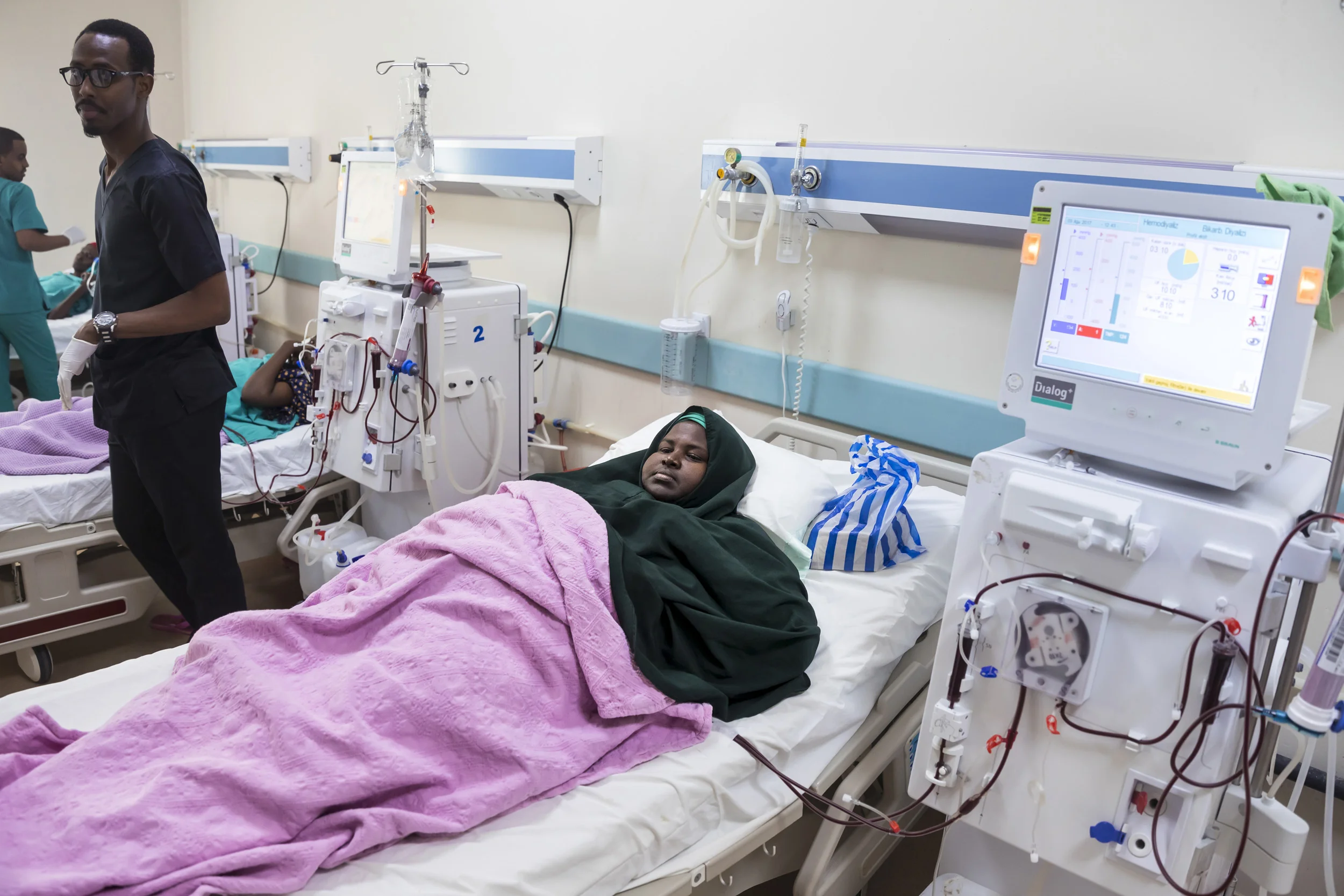
MOGADISHU, SOMALIA, 3 AUGUST 2017: Patients receive kidney dialysis at the new Turkish built and run hospital in Mogadishu. This special unit is the only one of its kind in Somali and services over 100 patients a week. The hospital also has 16 incubators for premature babies, the only facility of its kind in Somalia. There are increasing relations between the Turks and the Somalis, with the Turks building not only this hospital but also the new airport and many other projects in Mogadishu. President Erdogan himself has visited and opened the new hospital. The Turkish embassy in Mogadishu is huge and reaffirms their long-term commitment to investing in Somalia. (Photo by Brent Stirton/Verbatim for Time Magazine.)
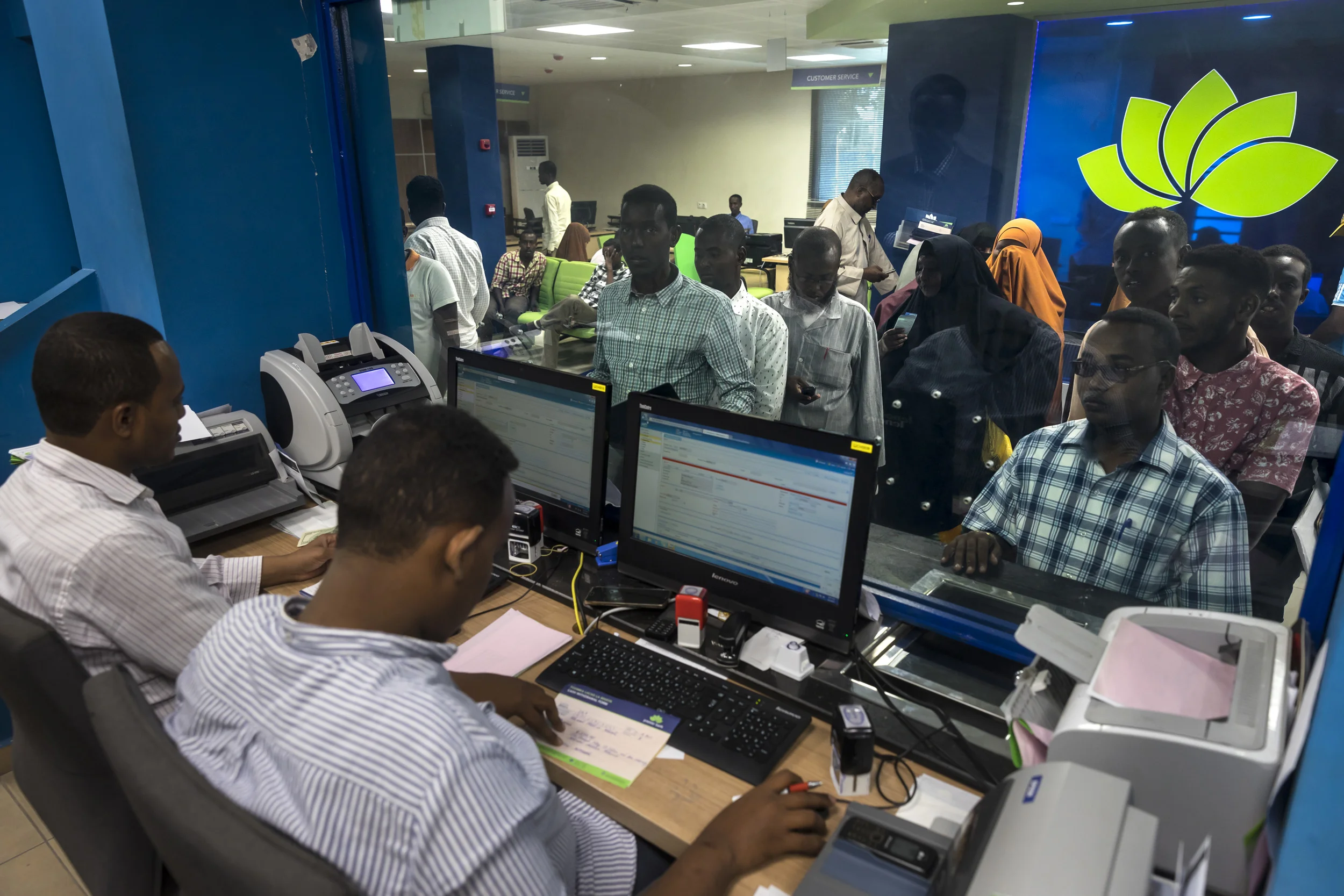
MOGADISHU, SOMALIA, 5 AUGUST 2017: Customers doing brisk business inside Premier Bank in Mogadishu. This modern bank has 6 branches in Mogadishu and 1 in Hargeysa. 70% of all banking is done by phone in Somalia and is done in dollars. The lack of a local currency is a weakness for Somalia, especially in the import/export sector. The central Bank of Somalia is working towards a national currency roll-out. Premier is the first bank to offer Mastercard and Visa facilities and Somalis have been quick to embrace this. The bank is also doing a lot of loan business which is helping with local business development. Premier credits the 2011 arrival of the Turks with renewed interest in investment in Somalia, since then they feel Mogadishu has experienced a steady growth. Premier also makes extensive use of social media to advertise their services and also facilitates online banking, something which plays well to security minded Somalis. The IMF is currently helping to restructure the central bank of Somalia and the bankers association is creating a regulated and supervised structure for national banks. (Photo by Brent Stirton/Verbatim for Time Magazine.)
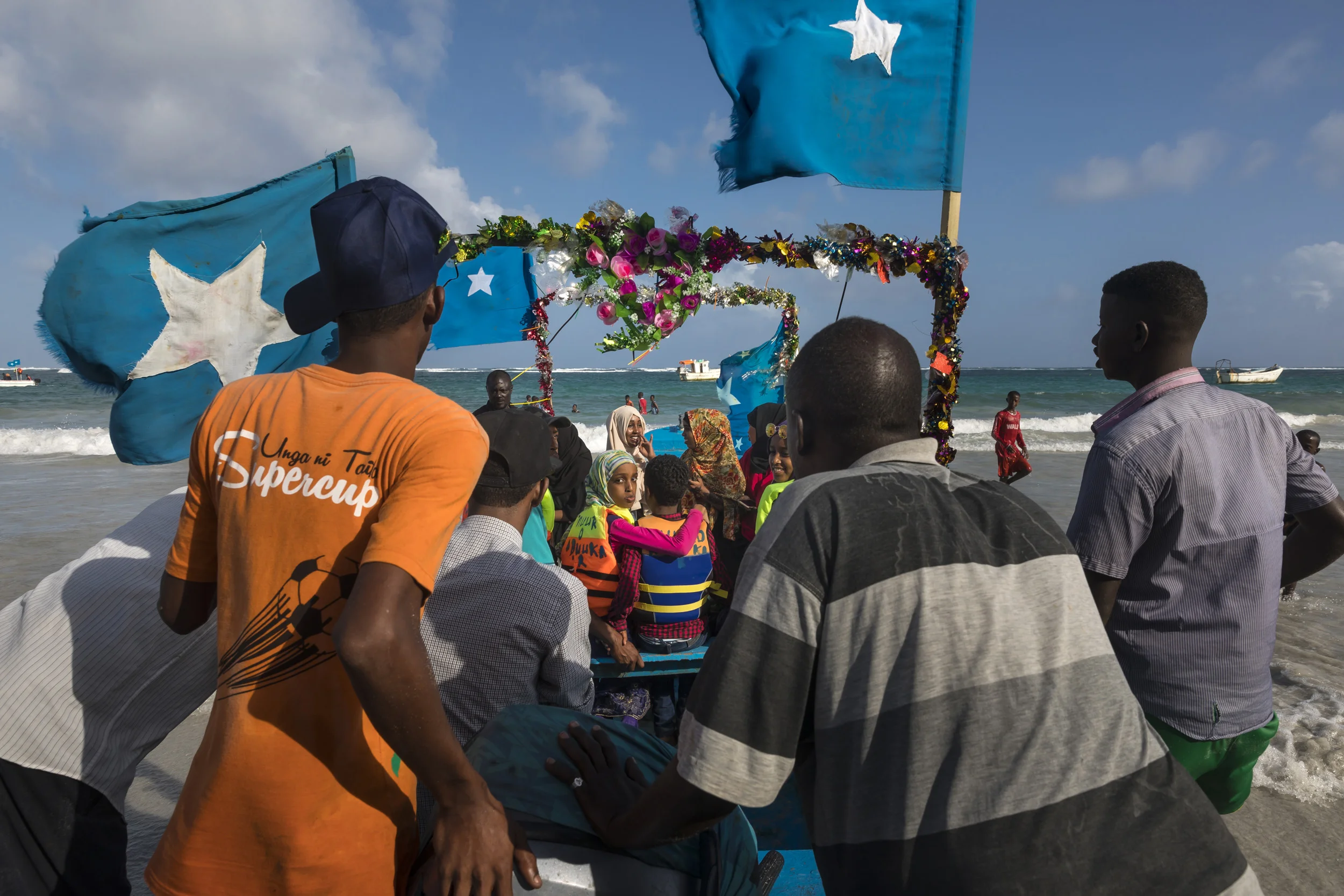
MOGADISHU, SOMALIA, 3 AUGUST 2017: Scenes from Lido Beach, where Mogadishu comes to enjoy the ocean. Boats take people out on jaunts to a nearby sandbar, people eat and drink and enjoy a time out from the city. When Islamist Al-Shabab ruled this section of Mogadishu, the beach a segregated affair with women on one side and men on the other. (Photo by Brent Stirton/Verbatim for Time Magazine.)

MOGADISHU, SOMALIA, 3 AUGUST 2017: An armed security guard amongst beach goers on Lido Beach, where Mogadishu comes to enjoy the ocean. Boats take people out on jaunts to a nearby sandbar, people eat and drink and enjoy a time out from the city. When Islamist Al-Shabab ruled this section of Mogadishu, the beach was a segregated affair with women on one side and men on the other. (Photo by Brent Stirton/Verbatim for Time Magazine.)

MOGADISHU, SOMALIA, 3 AUGUST 2017: Scenes from PeacePark, a complex catering to the youth of Mogadishu. There is an extensive playground for kids and teenagers are seen in their best clothes, selfies are going on everywhere you look and the young men are dressed like teens of most other countries. This is one of the few places where you will see fully made up Somali women, usually in colorful groups clustered around a selfie stick. (Photo by Brent Stirton/Verbatim for Time Magazine.)
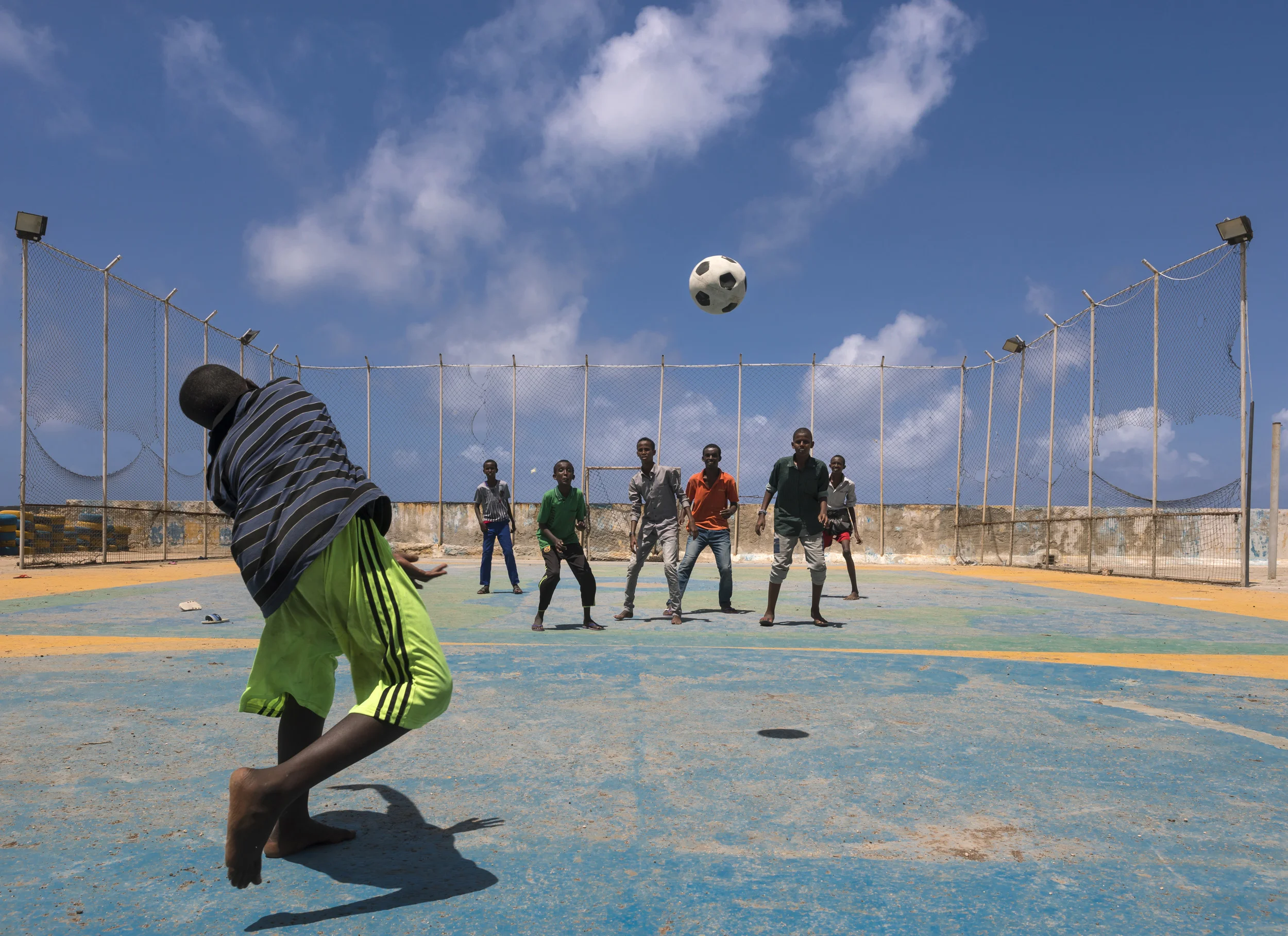
MOGADISHU, SOMALIA, 2 AUGUST 2017: Young boys play football on a concrete pitch along the foreshore of the Mogadishu beachfront. (Photo by Brent Stirton/Verbatim for Time Magazine.)

MOGADISHU, SOMALIA, 5 AUGUST 2017: Ahmed Jama, the owner of Village restuarants in Mogadishu, is seen at one of his restuarants. Jama has been attacked by suicide bombers more than 6 times since he moved back to Somalia from the UK in 2008. In the UK, he ran a successful catering business but now employs over 100 Somalis at his 4 restuarants. He remains optimistic, despite the added tragedy of losing his wife to a traffic accident in the last year. "I wanted to be a visionary for Somalia, to show people that it is possible to build something here. Mogadishu is definitely improving, Rome just wasn't built in one day. I am an asset for the Somalia nation and therefore I must be here. Small business development is key to Somalia's development, employment is equally important in the peacemaking process that must happen here. When yong people see that it is possible, it will not be so easy to recruit them for war." (Photo by Brent Stirton/Verbatim for Time Magazine.)
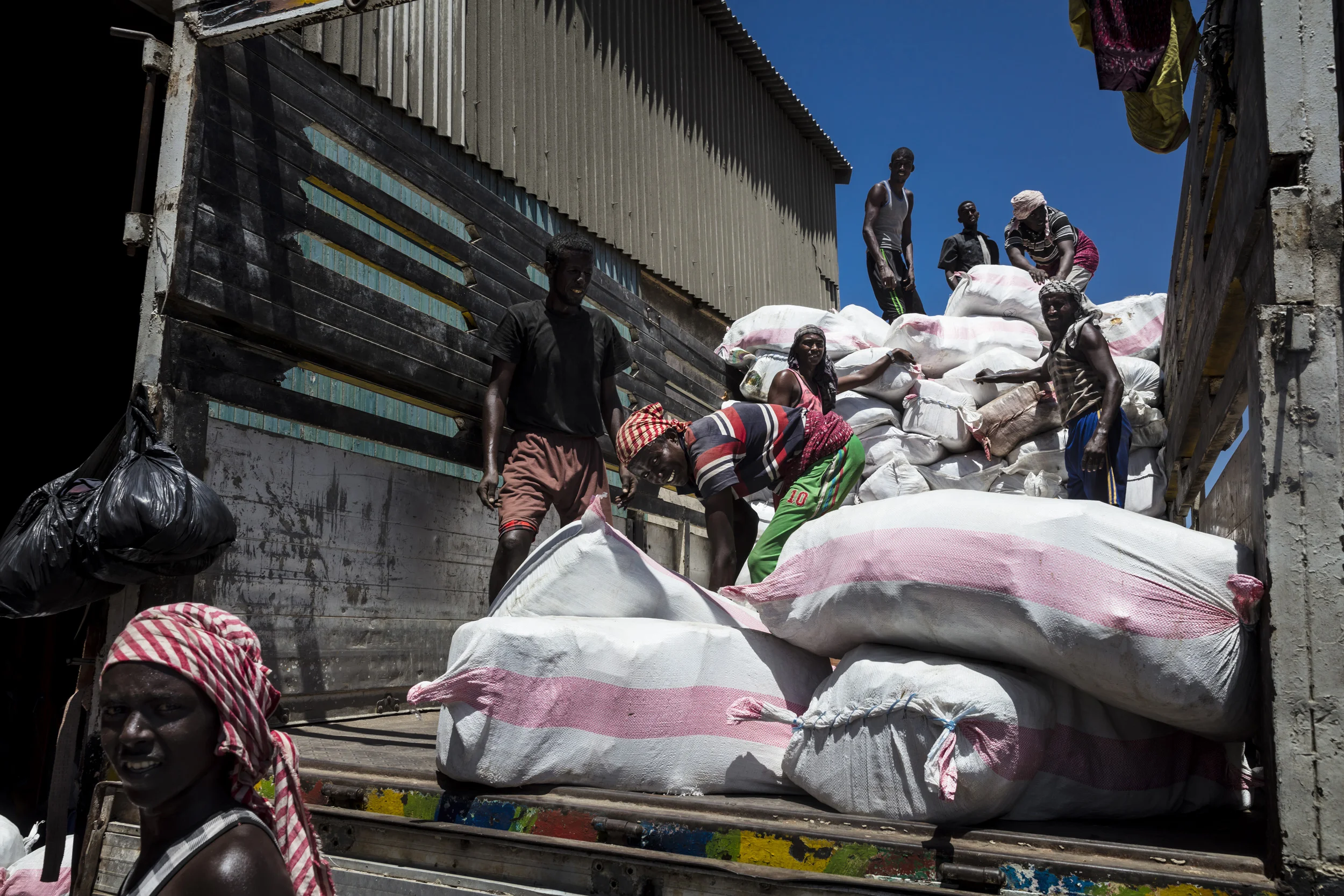
MOGADISHU, SOMALIA, 5 AUGUST 2017: Scenes from the port in Mogadishu.This port is largely managed by the Turks and is an essential import export pipeline for Somalia. (Photo by Brent Stirton/Verbatim for Time Magazine.)
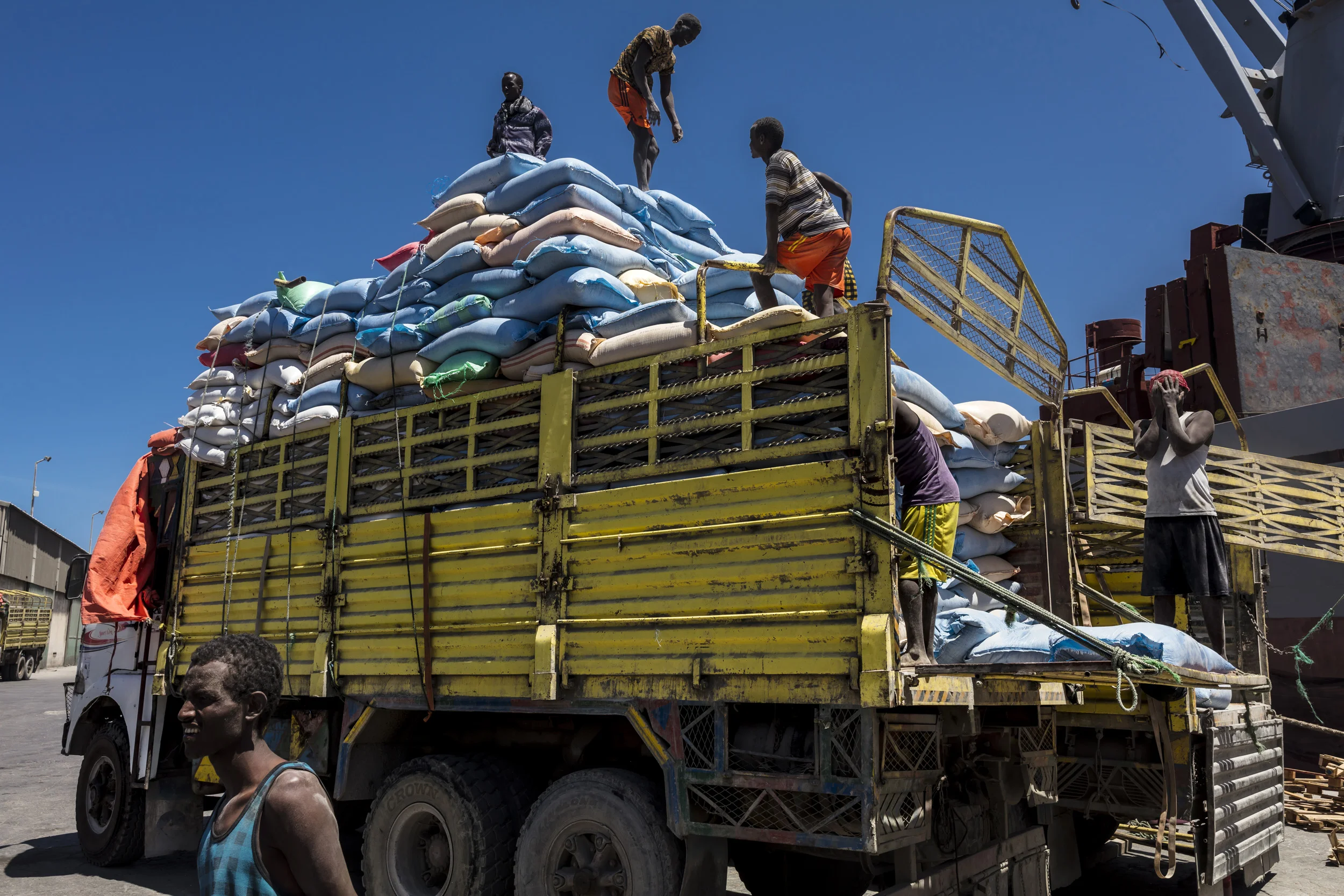
MOGADISHU, SOMALIA, 5 AUGUST 2017: Scenes from the port in Mogadishu.This port is largely managed by the Turks and is an essential import export pipeline for Somalia. (Photo by Brent Stirton/Verbatim for Time Magazine.)
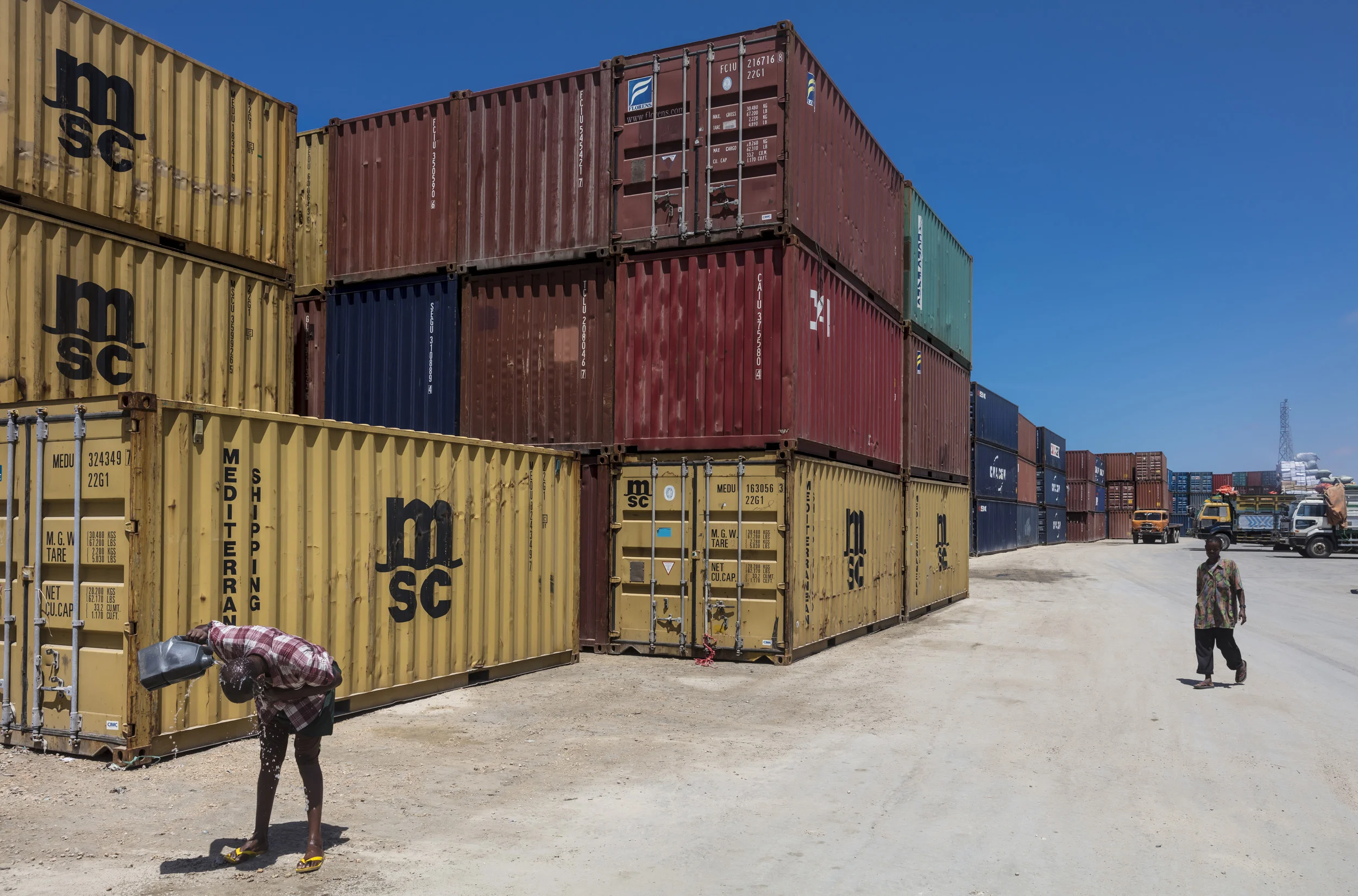
MOGADISHU, SOMALIA, 5 AUGUST 2017: Scenes from the port in Mogadishu.This port is largely managed by the Turks and is an essential import export pipeline for Somalia. (Photo by Brent Stirton/Verbatim for Time Magazine.)
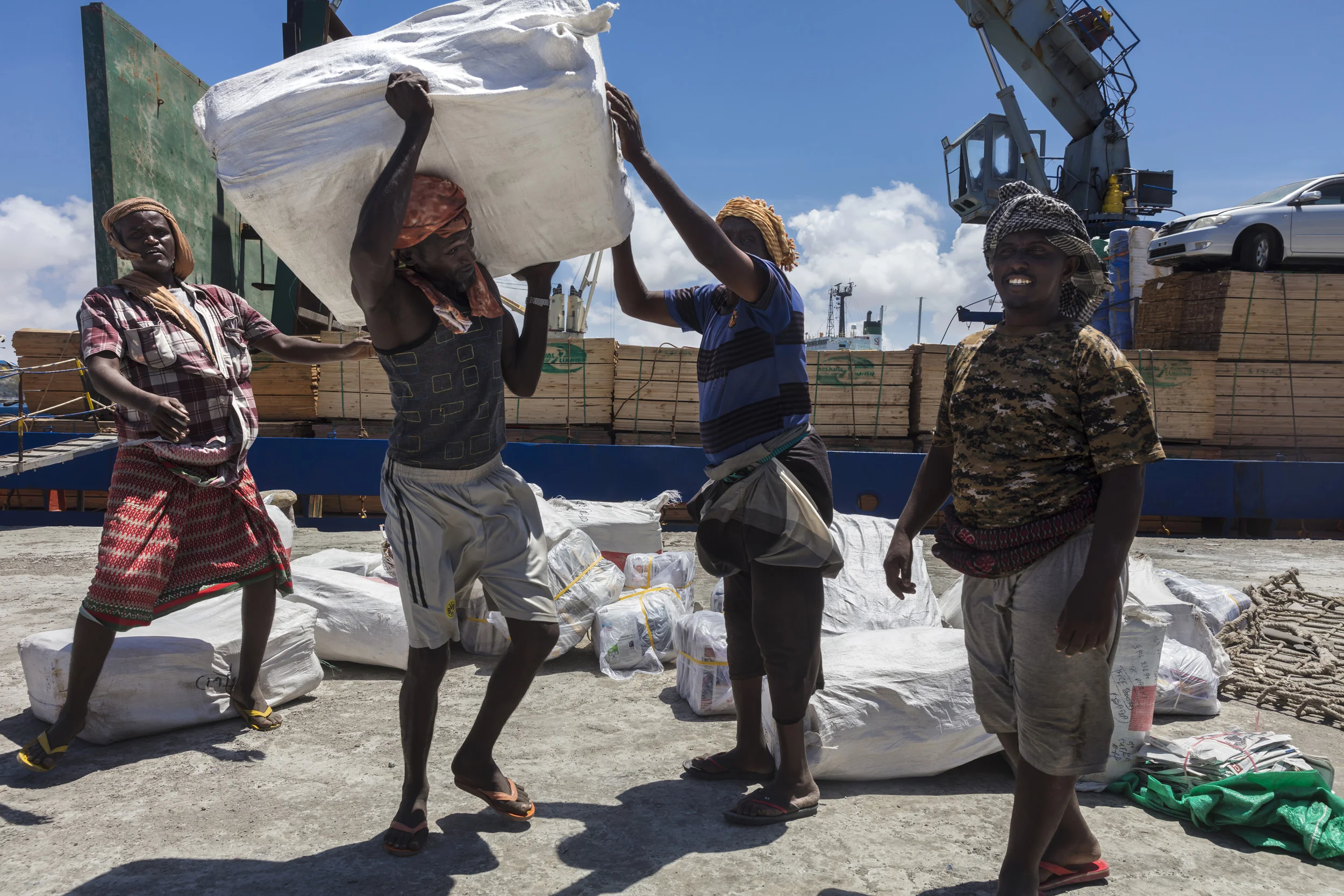
MOGADISHU, SOMALIA, 5 AUGUST 2017: Scenes from the port in Mogadishu.This port is largely managed by the Turks and is an essential import export pipeline for Somalia. (Photo by Brent Stirton/Verbatim for Time Magazine.)

MOGADISHU, SOMALIA, 1 AUGUST 2017: A parade at the Police academy in Mogadishu. (Photo by Brent Stirton/Verbatim for Time Magazine.)

MOGADISHU, SOMALIA, 1 AUGUST 2017: A parade at the Police academy in Mogadishu. (Photo by Brent Stirton/Verbatim for Time Magazine.)

MOGADISHU, SOMALIA, 1 AUGUST 2017: A parade at the Police academy in Mogadishu. (Photo by Brent Stirton/Verbatim for Time Magazine.)

MOGADISHU, SOMALIA, 6 AUGUST 2017: Police candidates attend a crime scene investigation class in Mogadishu. As well as classroom lessons, on this day they are also seen conducting a search of a crime scene involving a vehicle. This policetraining is aided by Bancroft, a US based organization which has the following for its mission statement: "Bancroft Global Development is a multinational, not-for-profit nongovernment organization that implements stabilization initiatives in conflict zones. Through ground-up, citizen-focused education and mentoring, Bancroft Global Development creates conditions that allow individuals to transcend basic survival needs and participate in establishment of culturally appropriate civil order and rule of law." (Photo by Brent Stirton/Verbatim for Time Magazine.)
